GETTING STARTED GUIDE
Install Instructions
Please follow these instructions to install and activate

To connect your Amazon accounts
1. Log in and select “Seller Accounts” in the left menu
2. Click on the green “Add New Seller Account” button in the top right corner and add the seller accounts
3. If you are the account owner, select the marketplace and authorize the connection
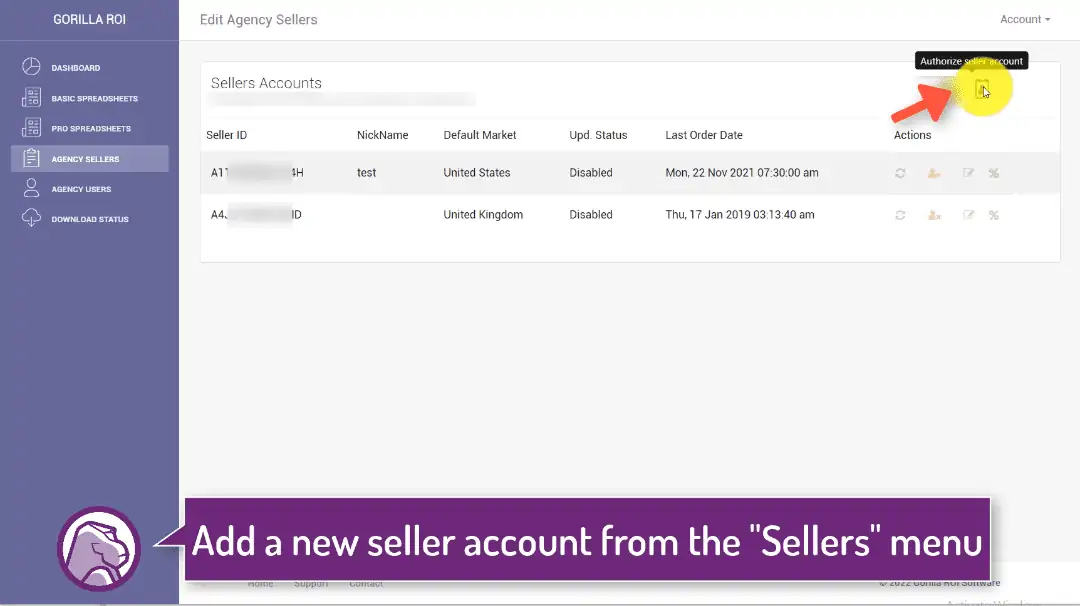
4. If you are not the Amazon account owner, copy the link and provide it to the account owner to authorize the connection
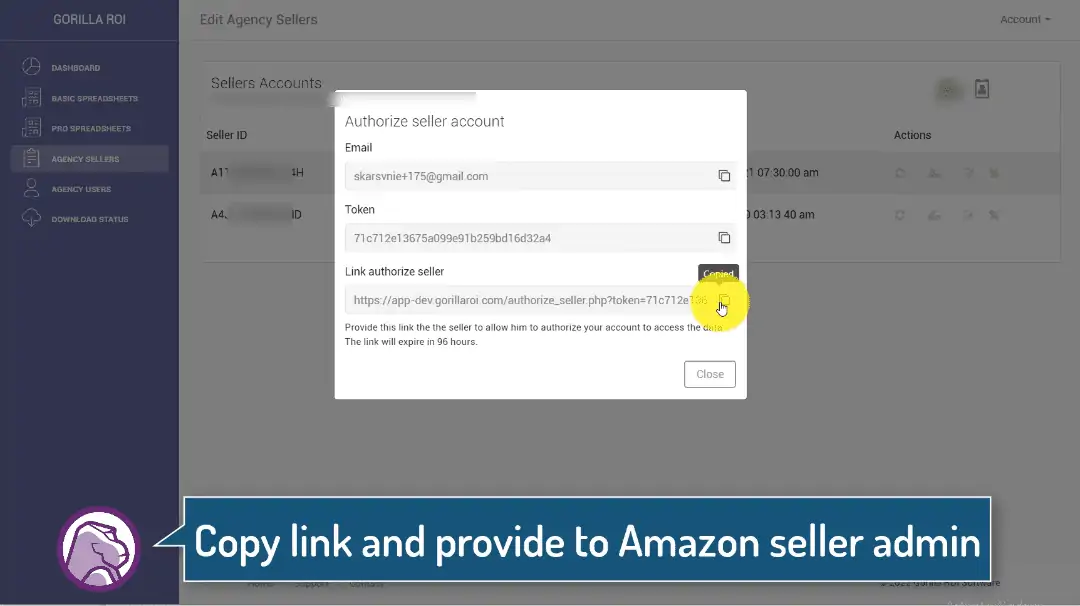
5. Select the marketplace and click the authorize button
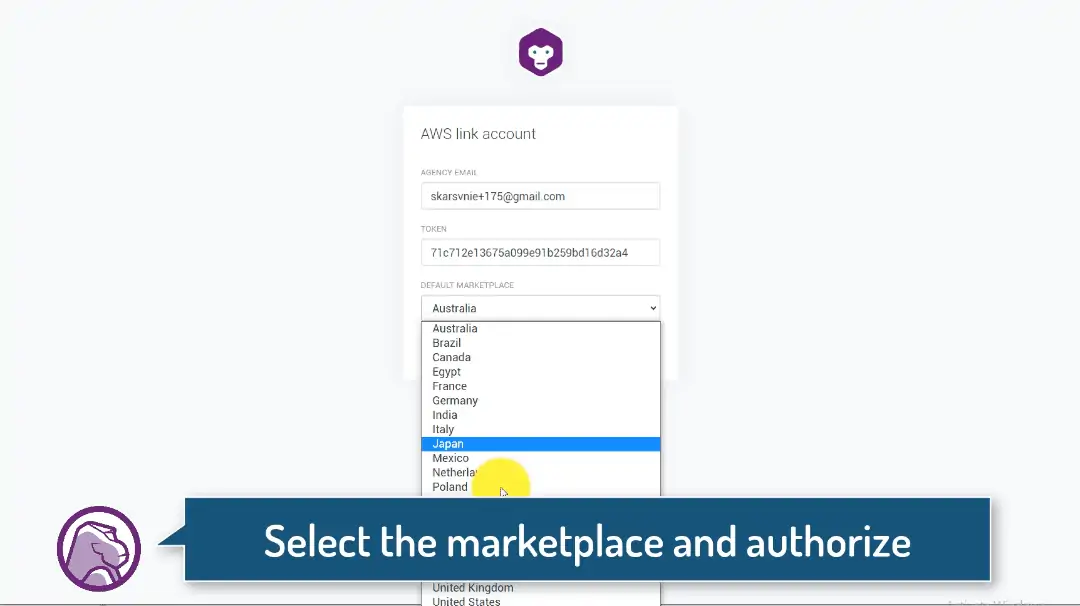
6. Seller Central will open up. Authorize the connection from Seller Central.
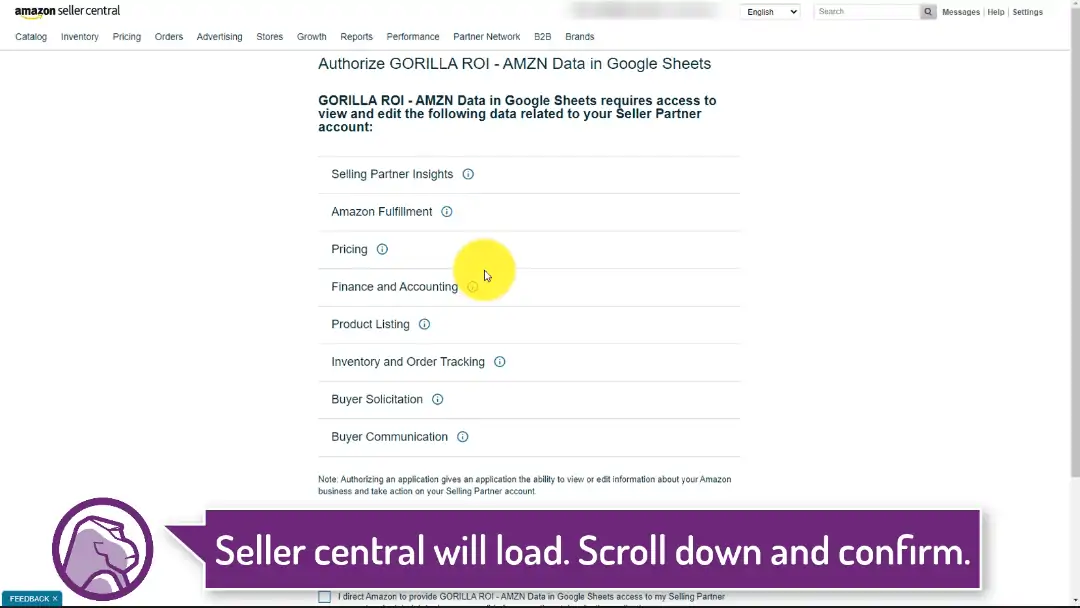
7. The seller account owner will see a success page, and an email will be sent to the Gorilla ROI user
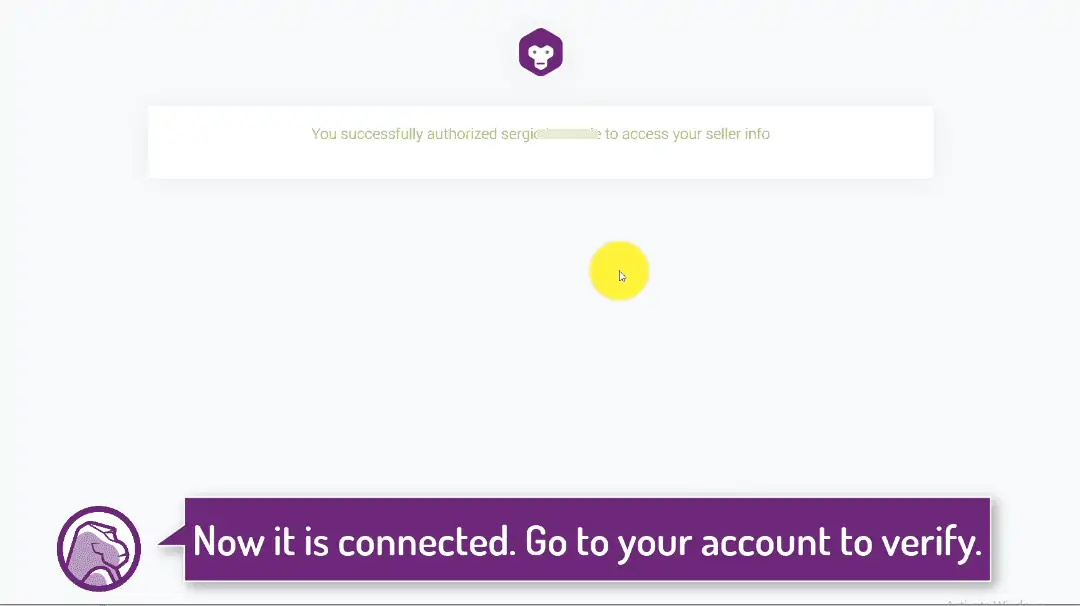
8. Wait for the connection to finish and you will be redirected to your Gorilla account, and the connection will appear active.
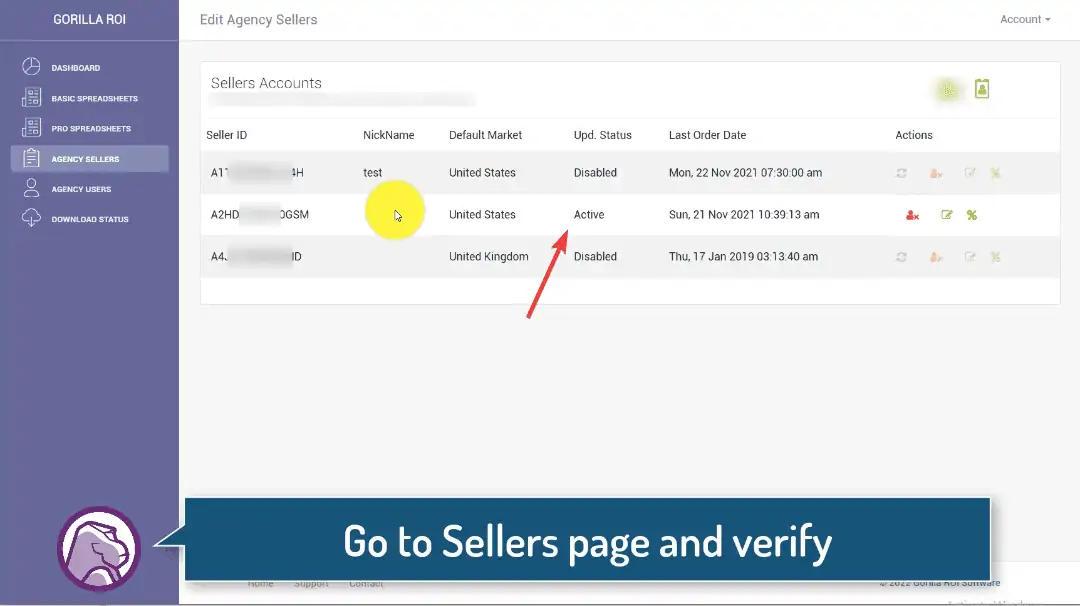
9. Add a nickname to easily identify the seller and to use in the formula

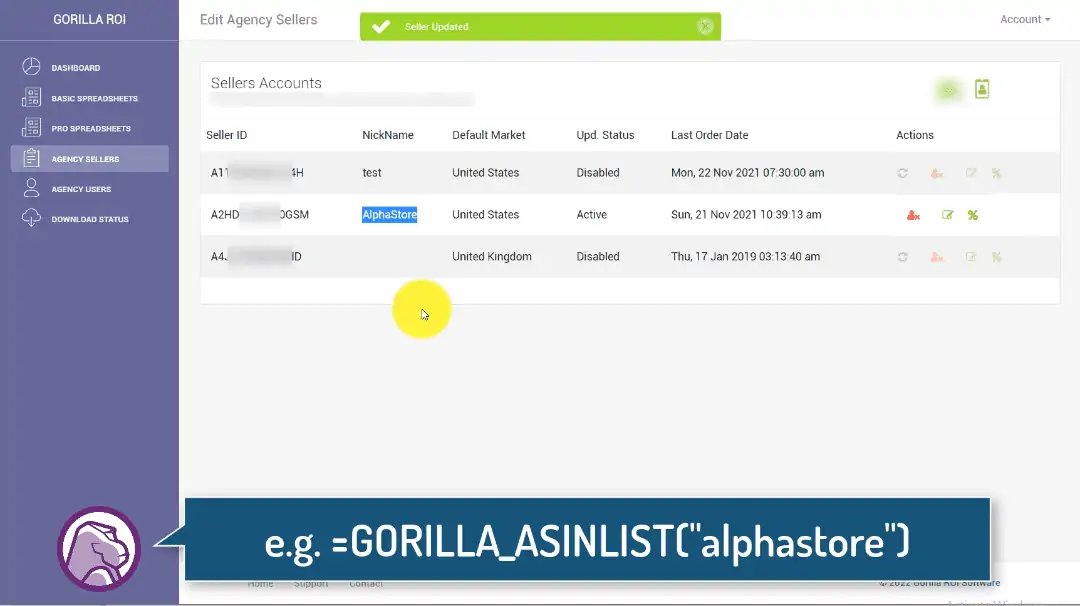
10. Wait for the data to import. Check the status on your account under “download status”.
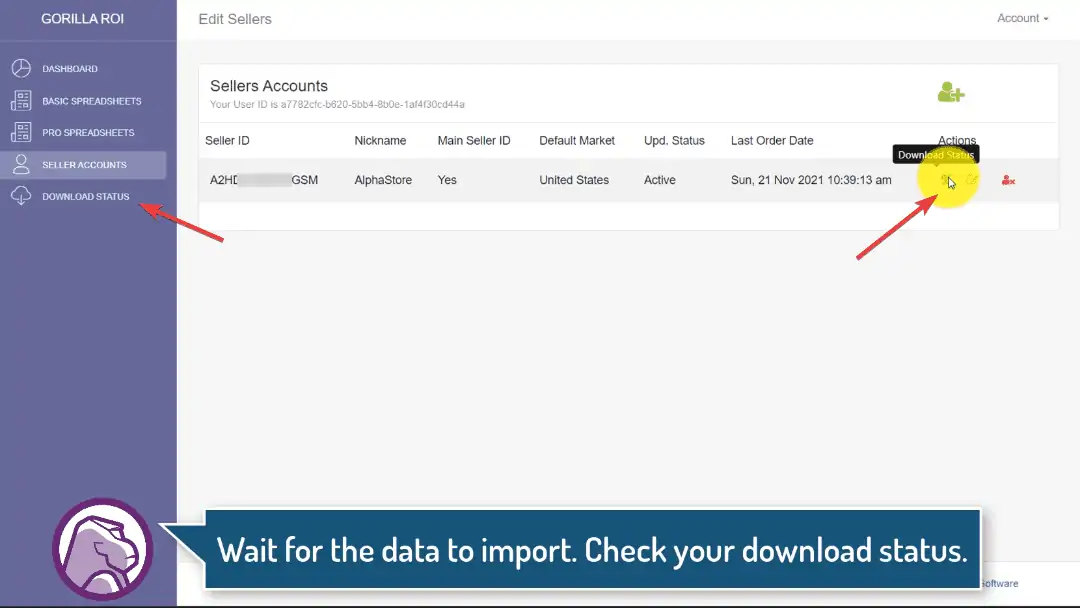
Watch how to install and activate the addon
Use incognito mode to start fresh
- Log in to your main Google Sheets (Workspace Account highly recommended)
- Install the addon
- Once installed
- Extensions > select the Amazon addon > Use this addon
- Extensions > select the Amazon addon > Add Account ID
- Enter your ID from your Gorilla Account dashboard
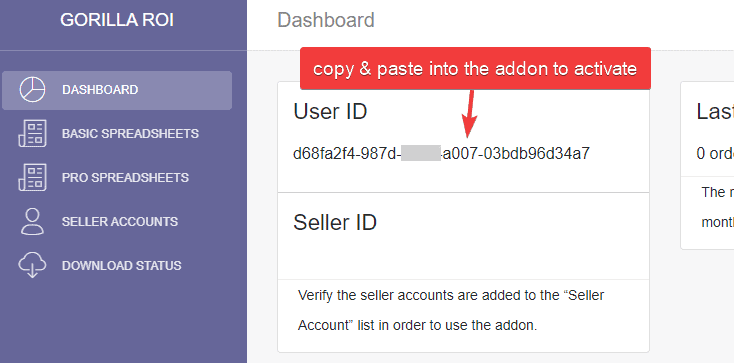
- If the ID doesn’t save, redo in incognito mode because Google is caching your G Drive.
- Wait for the data import process. Will take a couple of hours or more based on your account size.
Test in a new blank spreadsheet
Data must be imported first. Do this test a couple of hours after you have connected to Gorilla ROI.
- Create a new spreadsheet or use this shortcut link
- Extensions > Our Amazon addon > Use this addon
- Extensions > Our Amazon addon > Add Account ID
- Enter your Account ID from your Gorilla ROI account
- Save (if it doesn’t save, do it in incognito mode)
- In any cell type in =GORILLA_SKULIST(“your store nickname”) or =GORILLA_ASINLIST(“your store nickname”). Use the nickname you saved in your seller accounts.
- This formula will load the full list of SKUs or ASINs.
- Here are some easy formulas you can use. Copy these into another cell.
- =GORILLA_SKULIST(“store nickname”)
- =GORILLA_ASINLIST(“store nickname”)
- =GORILLA_SALESCOUNT(“store nickname”, “this year”)
- =GORILLA_SALESTOTAL(“store nickname”, “last month”)
- =GORILLA_FEETYPE(“store nickname”)
- =GORILLA_CHARGETYPE(“store nickname”)
- For detailed examples, videos and more functions, go to the full list of formulas. More examples & videos.
1. The ID doesn’t save in Google Sheets
Please try again in incognito mode. Google is caching your drive. This can happen if you have Google Drive installed on your local computer, or have Chrome extensions to use drive in offline mode.
2. How do I let a team member access the data
Have each person install the same addon version you are using. Share the User ID or Agency ID with them. Each person must unlock the addon using the same ID.
3. My data isn’t showing up
Data can take a while to download depending on the history and size of the account.
Go to Gorilla Account > Download Status.
You’ll see two % numbers and the dates. Make sure both are at 100% otherwise the import process is still in progress. Transactions take longer as we have to go through each one by one.
We provide the most in-depth set of data than any other Amazon service provider. Because of this, the import process takes more time to gather fully.
4. The data doesn’t match my seller central data
Check the download status. If the data hasn’t fully downloaded, it will be different.
Our data matches up with seller central extremely closely. If you see a discrepancy, contact us. It is usually how we roll up some numbers together as there are over 150 different fees and charges.
5. I get an error about too many requests from Google
Google gives a daily quota for how often you can pull data into spreadsheets. This is so you don’t overload their servers.
Use ranges and array formulas.
If you do single references in the formula such as A1, A2, A3… A1000, you are asking Google to request data 1000 times.
e.g.
=gorilla_inventory(“TESTSELLER”, A1)
=gorilla_inventory(“TESTSELLER”, A2)
=gorilla_inventory(“TESTSELLER”, A3)
…
=gorilla_inventory(“TESTSELLER”, A1000)
If you use formulas like this in your spreadsheet and try to refresh your data, Google will think you are a bot as the spreadsheet is requesting hundreds of requests too quickly in a short period.
If you do A1:A1000, you get the same data, but it is only requesting 1 time.
=gorilla_inventory(“TESTSELLER”,A1:A1000)
To get around this, please transfer ownership of the spreadsheet to a different Google user account to use a fresh Google quota limit.
Ready to unlock the power of your Amazon data?
Automatically sync your Amazon data to Google Sheets 24/7.
Reduce operating costs, scale easier and work smarter.
